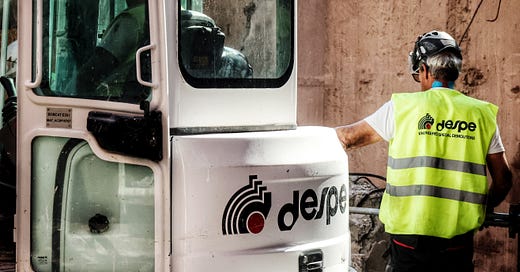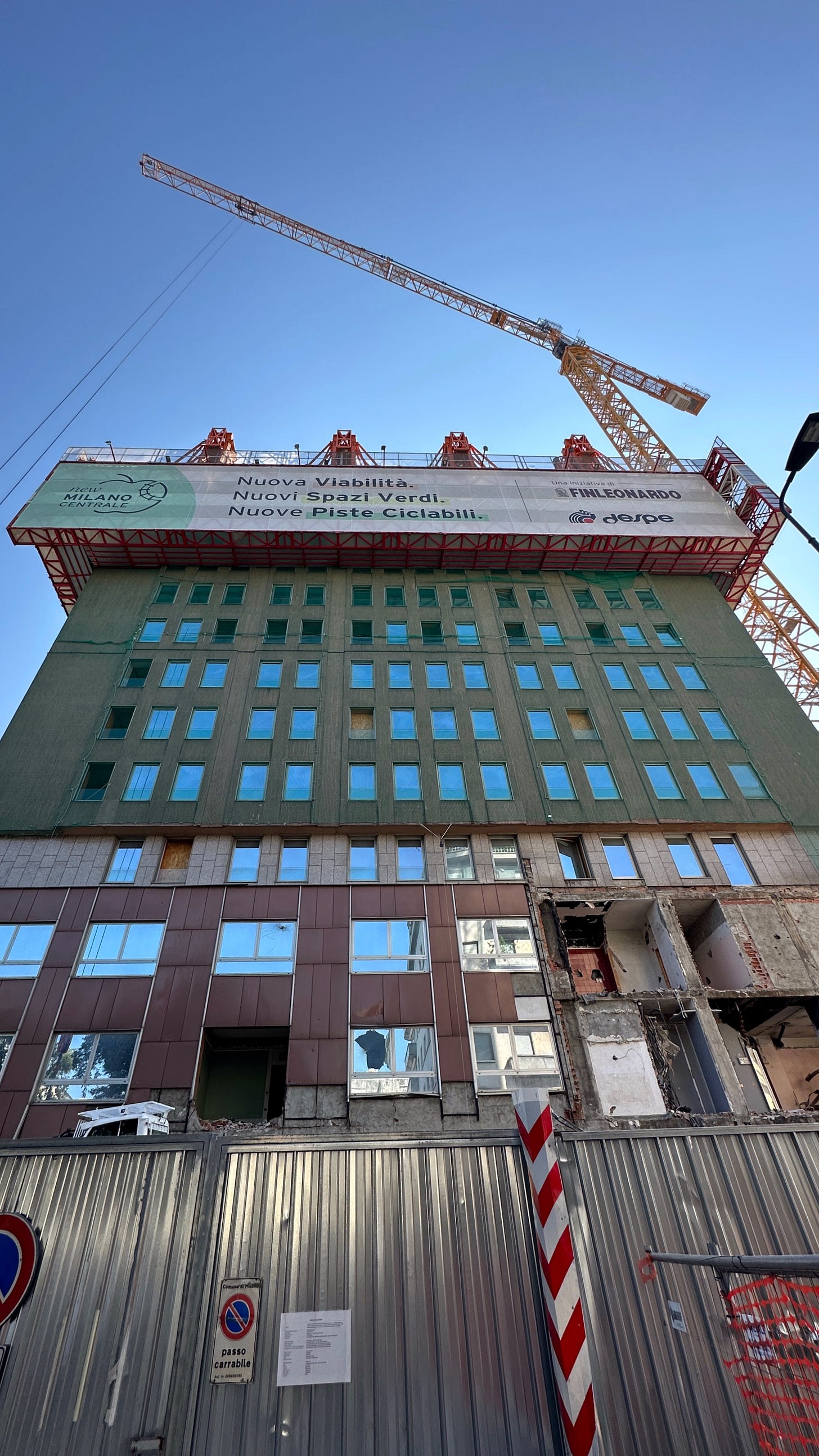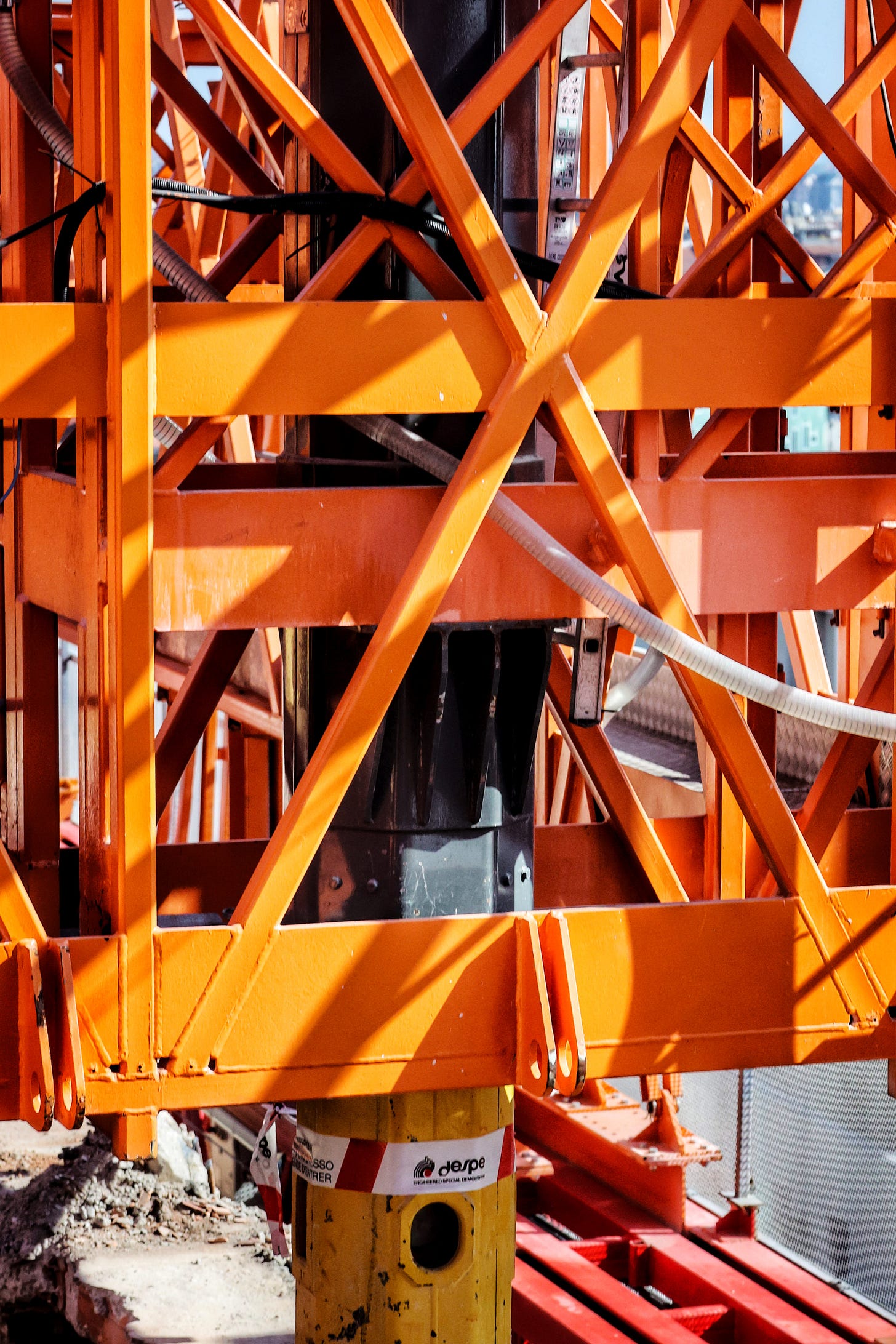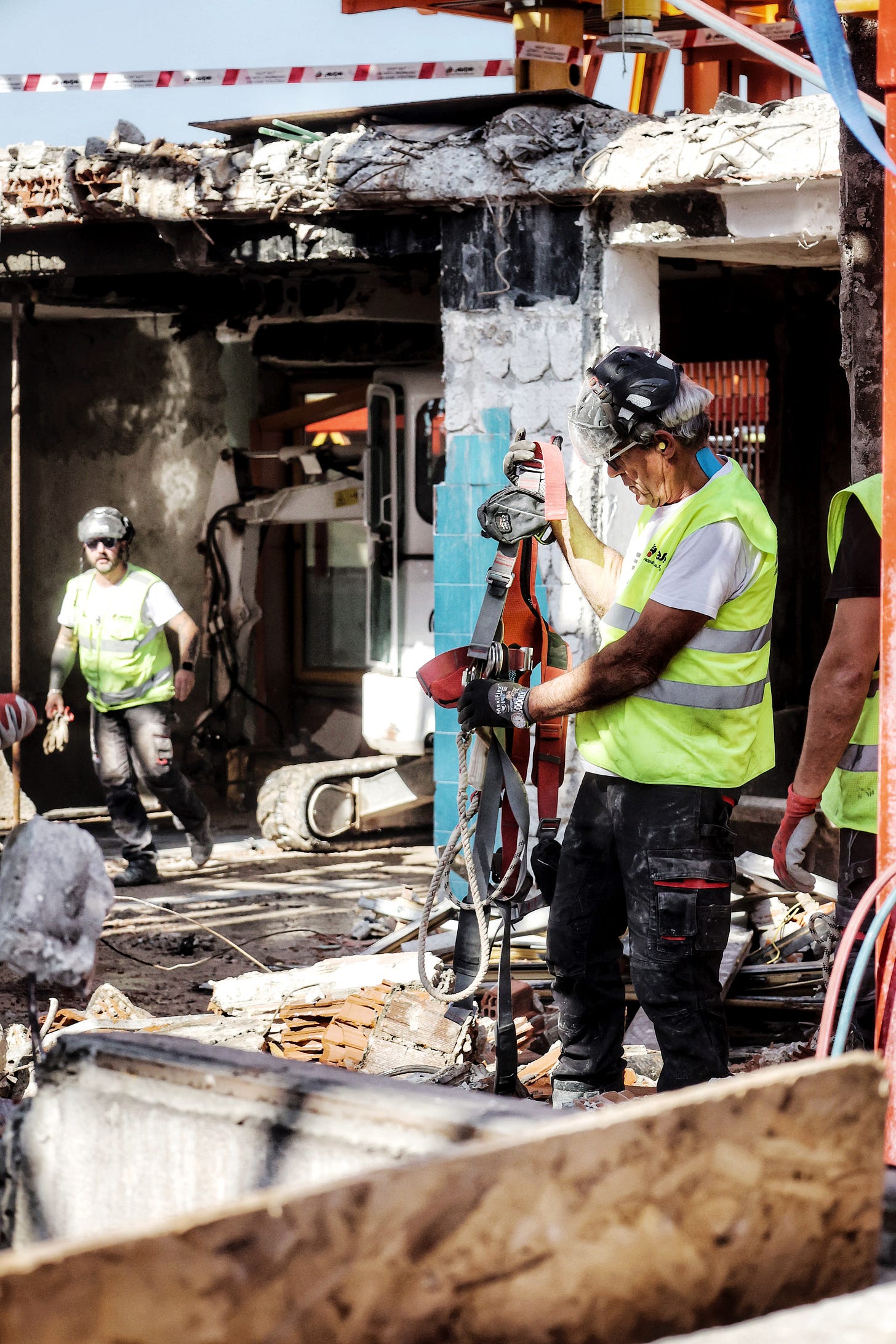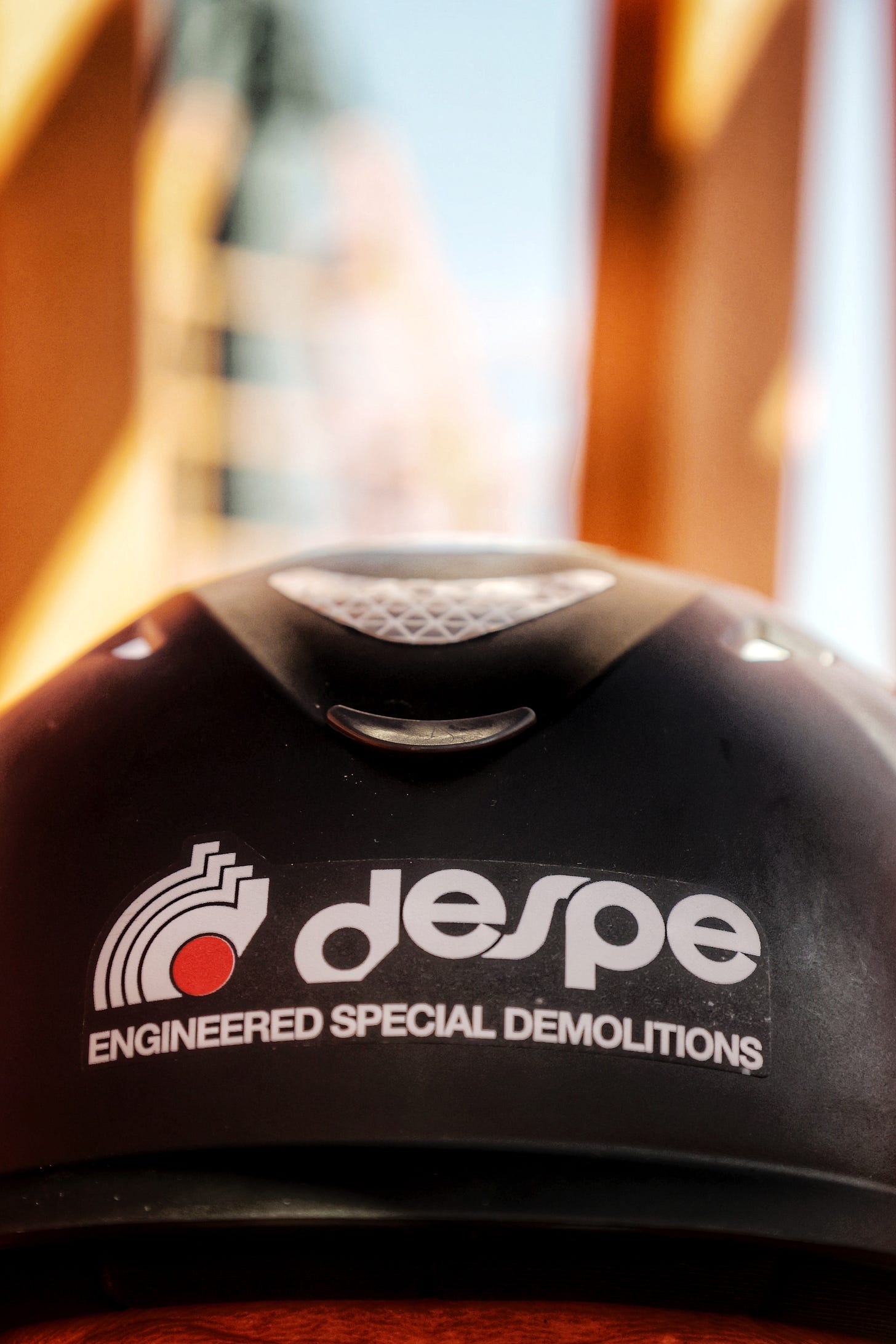The Fourth Way
There is a demolition taking place high above the streets of Milan. But, thanks to the use of some state-of-the-art demolition engineering, the Milanese are oblivious. This is the Top Down Way.
When faced with the need to remove a tower block from a city skyline, the modern demolition contractor typically has three methodologies in its armoury. If there is sufficient space, explosive demolition is one option. Alternatively, and assuming it can gain access, a high reach excavator might be called upon to munch the structure down from the ground. Or a crane might be deployed to lower excavators and skid steer loaders onto the roof of the structure to carry out a "Top Down" demolition.
Each of these accepted methodologies has its advantages and its disadvantages; its pros and cons; its benefits and its drawbacks.
But there is another way. A fourth way. In the right application, a better way. There is the Top Down Way.
Marvel of Milan
I am stood atop the former Hotel Michelangelo in Milan, Italy. Straight ahead is the Milano Centrale railway station; an Art Deco giant that dominates the Piazza Duca d'Aosta. All around and as far as the eye can see is the vast expanse of Greater Milan, fashion capital of the world; location of the Italian Stock Exchange; and home to two of football's most famous clubs - Associazione Calcio or AC Milan and Internazionale or Inter Milan - who share the equally famous San Siro Stadium.
Now I said I am stood atop the Hotel Michelangelo, but that is not strictly true. I am actually stood approximately three metres above and two metres off the side of the rapidly shrinking structure. Beneath my feet is a solid steel deck. It is the uppermost of three such decks, each stacked on top of each other. Those decks are the only thing standing between me and a 45 metre plummet to the sunny but unforgiving Milan streets below. More importantly, however, those three decks form part of the patented Top Down Way system developed, designed and operated by Italian demolition giant Despe. Those three decks and the operating system they support ensure that the people of Milan can go about their daily routine of drinking espresso and looking effortlessly stylish without fear of falling debris from the demolition taking place high above them.
It is eight years since I was last in or on the Top Down Way. On that previous occasion, it was suspended high above the streets of Glasgow as Despe worked with Scottish demolition contractor Safedem to safely dismantle a pair of matching tower blocks known locally as the Gallowgate Twins.
In the 12 years since the Top Down Way made its maiden voyage, it has worked in Lyon in France, in Glasgow and at the headquarters of Carlsberg in Copenhagen in Denmark.
But for its latest outing, the system has returned home to Italy. In fact, it is working approximately an hour from the Despe headquarters in nearby Bergamo.
A Hotel Transformed
Standing 17-storeys tall, the Hotel Michelangelo was built in 1971. With a four star rating, it attracted tourists and business travellers from the world over and welcomed them into air conditioned luxury that many would, no doubt, be reluctant to leave.
The final residents of the hotel were less concerned with luxury, however. And for them, leaving was not an option.
With Italy among the earliest and hardest hit by the COVID-19 pandemic, Milanese authorities converted the hotel into a quarantine facility. It opened in March 2020 with enough space for 300 patients—mostly people well enough to be discharged from hospitals, but who still tested positive and that didn't have the space to isolate at home.
Despite the transformation from hotel to temporary quarantine unit, the Hotel Michelangelo retains traces of its opulent past. Indeed, part of the challenge facing the Despe demolition team is to recover thousands of the red/brown tiles from its facade for use in the planned replacement.
But the Michelangelo is now in its end state; its final transformation will see the hotel slowly, safely and expertly erased from the Milanese skyline.
A Long Shadow
I am joined atop the Hotel Michelangelo by Stefano Panseri, CEO of Despe and incumbent president of the European Demolition Association (EDA).
Demolishing a tower block in a busy city centre under the gaze of the public and the media is unquestionably challenging. Running an internationally-renowned demolition company is not for the faint of heart. And heading up the EDA at a time when the global demolition industry is under attack by politicians and the environmental lobby is no walk in the park either.
Panseri embraces these multiple challenges with admirable panache and quiet confidence. He is unquestionably his own man; but his calm, considered approach echoes that of his father Giuseppe, himself a former EDA president.
Giuseppe Panseri brought Despe to prominence on first the Italian, then the European and ultimately the global stage. He was and remains a demolition pioneer and an iconic figure in the industry. His presence casts a long shadow.
It is to their enormous credit, therefore, that Stefano and his brother Roberto have blossomed in their own right, pushing the company to new heights and to ever-greater global reach, influence and innovation.
Thought of Everything
It is virtually impossible to describe the engineering marvel that is the Top Down Way. It is a steel cocoon that caps the top of a tower block during its demolition. Its primary aim is safety; its primary purpose is to contain any and all debris that might potentially fall to the ground below. And with three integrated "crash decks", it is actually equipped to do just that, unlike the scaffolding and monarflex sheeting it was designed to replace that - worryingly - remains the go-to option for many demolition contractors.
Such a description, however, fails to encapsulate the engineering complexity and operational simplicity of the Top Down Way (TDW).
The system is carried on massive hydraulic jacks that sit atop the existing columns of the building being demolished. This configuration ensures that the 450 tonne weight of the TDW is transferred down through the structure along proven load paths.
Stefano Panseri says that one of the questions he is asked about the Top Down Way most often is about the weight of the system. "There is always a question about adding so much weight to a building. But by the time the TDW is installed, the structure has been soft stripped and a huge amount of weight has been removed," he says. "In fact, the Top Down Way generally adds less than 20 percent of the weight that has already been removed."
Within the cocoon of the TDW, the demolition process is mostly similar to any top down method used anywhere else. There are differences, however.
Demolition takes place in a meticulously-planned clockwise sequence. While one of the structure's columns is demolished, the weight of the TDW is carried on 11 of the 12 jacks. As soon as that column is out of the way, the remaining hydraulic jack takes its place as the demolition focus moves to the next column and the external walls it supports.
With the entire building having been propped in advance, the excavators carrying out the actual demolition are, perhaps a little larger than the average top down demolition machine. The attachments wielded by those machines are significantly larger and more powerful and make relatively light work of the extremely tough reinforced concrete.
And it is at this point that the Top Down Way reveals one of the may tricks it has up its steel sleeves.
To ensure that each descending hydraulic jack leg sits squarely on the column cap, any remnants of steel reinforcing bar is cut using an oxy-acetylene torch. That torch is fuelled from an industrial gas line built into the very framework of the TDW.
That framework also carries electrical power for additional tools and systems; and there is lighting within to allow demolition to progress after dark when local noise restrictions allow. The platform also has its own integrated dust suppression system, proving that it really IS possible to think of everything.
It takes three and a half days to demolish each floor of the hotel with all arisings being dropped down the existing elevator shaft for further processing and removal from the site.
With the demolition of a floor complete, the Top Down Way "climbs" down the building to the next level. That climbing is accomplished by retracting all 12 of the hydraulic jack legs by approximately 3.5 metres, roughly the height of each hotel level. That lowering takes place in around 10 minutes.
All of this is achieved from an integral control room that uses an array of sensors and some purpose-built software to ensure that the descent is controlled, balanced and perfectly sequenced.
Standing on the platform as it descends is like being on board the world's slowest elevator. From ground level, the descent is barely perceptible. And yet, descent by descent, floor by floor, the Hotel Michelangelo is vanishing before Milanese eyes.
The Conductor
I came to Milan for two reasons. The first was to catch up with Stefano Panseri, a demolition man I admire and respect above most. I am proud to consider him a friend, even though it has been more than three years since we were last face-to-face (in Tokyo, weirdly).
The second reason was to revisit the Top Down Way. I saw it in Glasgow almost a decade ago and I have been a vocal advocate for the system ever since. But during my previous visit, I didn't get to witness the system's greatest party trick - Lowering a 450 tonne steel cocoon safely and almost silently.
My trip to Milan reinforced my respect for Stefano Panseri and I am now even more of the belief that the Top Down Way is The Fourth Way.
Yet my lasting memory of this visit will not be of Stefano, the engineering excellence of the Top Down Way, or even the Italian cuisine. It is of the team that makes it tick and of one man in particular: Valter Gotti. The Conductor.
The operators of the excavators carrying out the actual demolition and the skid steer handling the debris move quickly yet efficiently and safely. In addition to the demolition, they ensure that the working area is clean and clear of potential obstacles. And there is a team of operatives that are responsible for cutting steel rebar, provide additional dust suppression, to sweep the floor and to keep the TDW on schedule.
All of this intense activity is overseen, choreographed and conducted with little more than a hand signal from Gotti.
At one point during my visit, Gotti walked towards a Despe colleague who had a jet of water trained upon the NPK attachment carrying out the demolition. He held up his hand and, as if by magic, the jet of water ceased.
For a moment, The Conductor was Aquaman.
Each of the 10-man Despe team are highly-experienced and each is a virtuoso in his own right. But it is The Conductor that dictates the tempo, the intensity and the performance of this demolition orchestra. The Top Down Way marches to his rhythm.
The Art of Demolition
The Milanese hotel that is gradually disappearing from the skyline is, of course, named after Italian sculptor, painter and architect Michelangelo di Lodovico Buonarroti Simoni, better known simply as Michelangelo.
Michelangelo was famous for The Madonna della Pietà sculpture at Saint Peter's Basilica in the Vatican City; the sculpture of David in Florence; and, of course, the painting of the frescoes that adorn the ceiling of the Sistine Chapel in the Vatican.
Not surprisingly, the original Michelangelo is known as one of the greatest artists of the High Renaissance.
It is appropriate, therefore, that this Michelangelo should bear witness to the very latest demonstration of the Art of Demolition.


